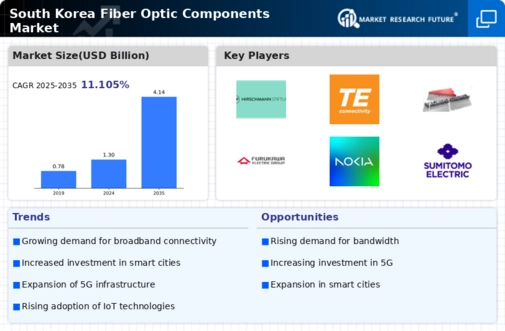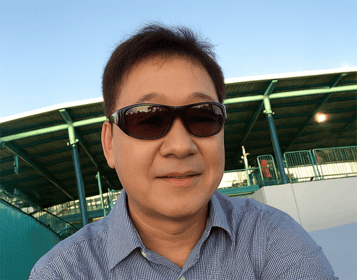The South Korea Fiber Optic Components Market is characterized by significant competition driven by the rapid advancements in telecommunications and data infrastructure. As businesses and consumers increasingly rely on high-speed internet connectivity and efficient data transmission, various companies are striving to capture market share through technological innovation and strategic partnerships. The ongoing expansion of network demands, such as 5G rollouts and smart city initiatives, is pushing players in this market to enhance their product offerings and adopt competitive pricing strategies.
As a result, understanding the dynamics of competition within this landscape is essential for stakeholders looking to navigate the intricacies of the market effectively.In the context of the South Korea Fiber Optic Components Market, Hirschmann has established itself as a prominent player known for its robust product line that supports various communication requirements. With a strong emphasis on innovation, Hirschmann offers a range of fiber optic components that enhance connectivity solutions across diverse industries.
The company’s commitment to quality and reliability has allowed it to build a formidable reputation among customers, positioning itself as a trusted supplier. Hirschmann's strengths include its advanced technology, strong customer relationships, and a focus on maintaining high standards of operational excellence, which collectively contribute to its sustained competitive edge in the South Korean market.TE Connectivity also stands out in the South Korea Fiber Optic Components Market, offering a wide array of products that cater to the growing need for high-performance connectivity solutions.
The company's focus on innovation ensures that its fiber optic components meet industry standards and support various applications in telecommunications, automotive, and industrial sectors. TE Connectivity's market presence is bolstered by its commitment to research and development, enabling the company to launch cutting-edge technologies and solutions tailored to regional demands. Additionally, TE Connectivity has engaged in strategic mergers and acquisitions to enhance its product portfolio and expand its footprint, further solidifying its strengths in the South Korean market.
Their diverse range of services, along with a dedication to meeting customer needs, positions TE Connectivity as a strong competitor in the fiber optic components landscape.




















